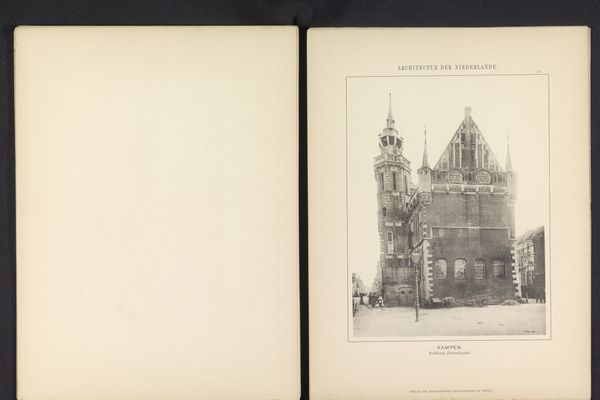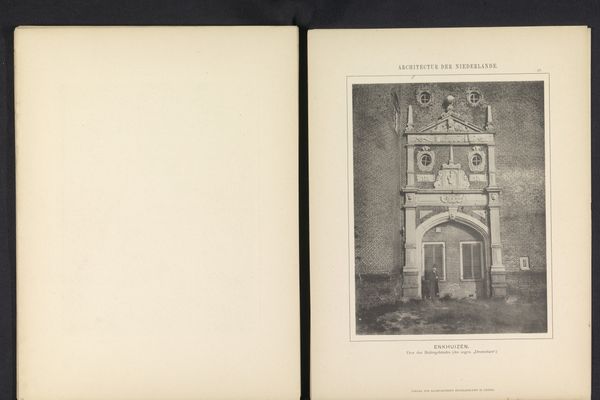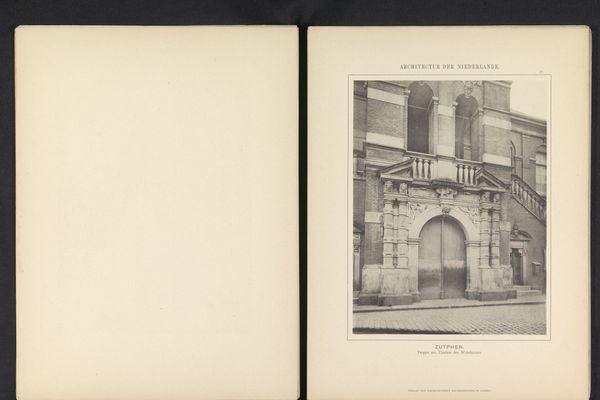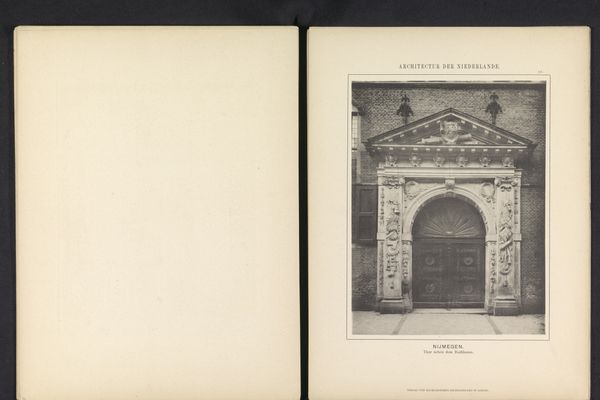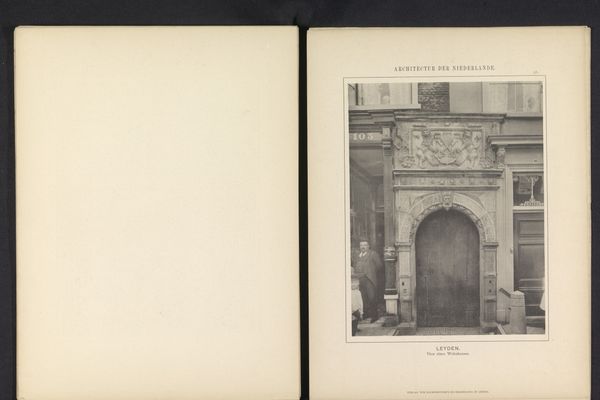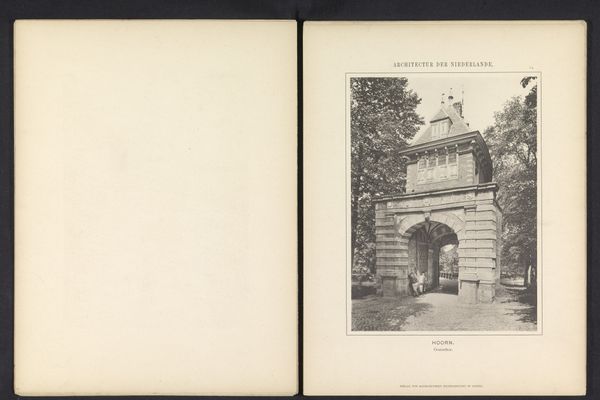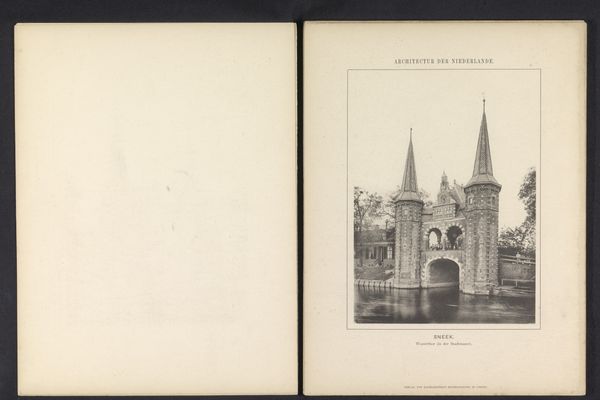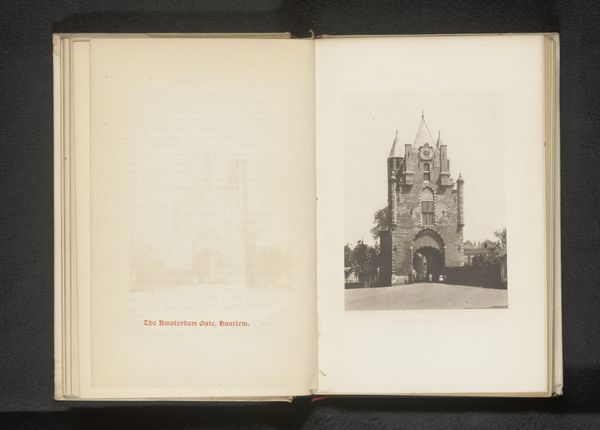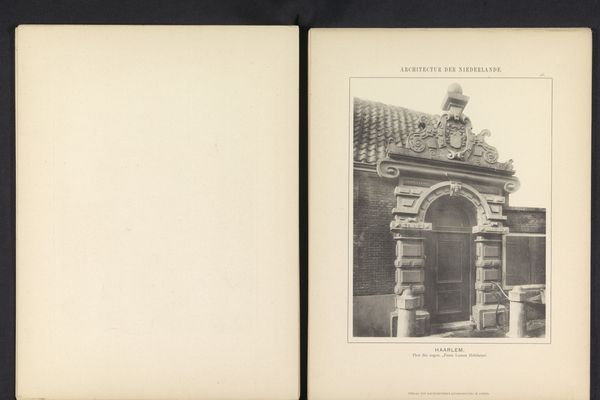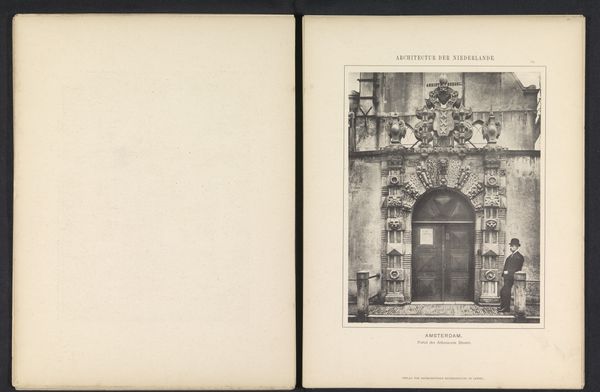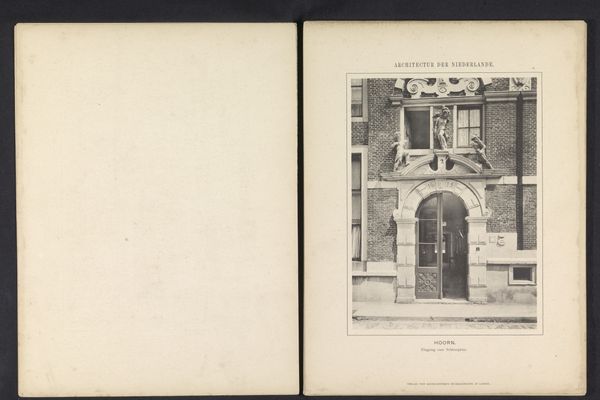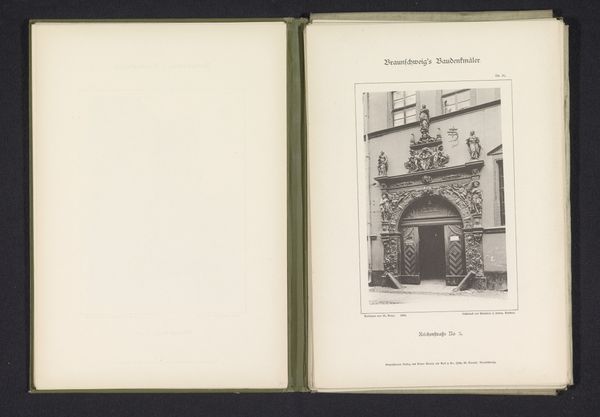
print, photography, architecture
#
dutch-golden-age
# print
#
photography
#
cityscape
#
architecture
Dimensions: height 257 mm, width 197 mm
Copyright: Rijks Museum: Open Domain
Curator: This captivating photographic print, dating to before 1894, offers us a glimpse of the Amsterdamse Poort in Haarlem, now residing here at the Rijksmuseum. Editor: The immediate impression is one of civic pride tempered by the somewhat muted tones of early photography. There's a clear sense of grandeur but the lighting and age also imbue it with a certain nostalgia. Curator: Absolutely. The photograph itself becomes a document of how Haarlem wished to project its identity—a thriving, well-ordered urban center at the gateway to Amsterdam. Notice the careful composition, highlighting the architectural details. Editor: I am also struck by the figures populating the gate’s entrance. While secondary to the architecture, they aren't merely bystanders but actors within the photographed reality. How does their inclusion and arrangement affect the overall presentation? Curator: It does present an image of accessibility. The gate isn’t simply a monument, but a functioning part of city life, actively in use and connected to the rhythm of commerce. The presence of individuals invites the viewer into that history. Editor: However, doesn't the photograph’s framing subtly suggest the gate, and by extension the city, is being presented for the male gaze? We are observing it, documenting it. The power dynamic is unspoken yet evident in the choice to feature a structure historically associated with control and entry. Curator: That’s a valid interpretation. Though I would argue that the purpose of such visual representation also aimed to further civic identity on a national and perhaps international stage during that period of increasing national consolidation in the Netherlands. Editor: And the gate itself is heavy with history. Functioning for years, witnessing trade, travel and various political and societal movements, each layer accumulating collective stories that a still photographic document of that age can barely begin to suggest. It almost urges us to consider what narratives and viewpoints remain underrepresented, unacknowledged by dominant histories. Curator: Precisely. Viewing this image allows us a tangible point of departure to explore the city’s evolving narrative. Editor: It definitely offers us layers to think about and analyze the narratives surrounding its making. Curator: Indeed. A window into understanding the Netherlands and the evolving role of Dutch cities at the close of the 19th Century.
Comments
No comments
Be the first to comment and join the conversation on the ultimate creative platform.
